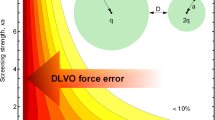Summary
Various coupled cluster (CC) and quadratic CI (QCI) methods are compared in terms of sixth, seventh, eighth, and infinite order Møller-Plesset (MPn, n=6, 7, 8, ∞) perturbation theory. By partitioning the MPn correlation energy into contributions resulting from combinations of single (S), double (D), triple (T), quadruple (Q), pentuple (P), hextuple (H), etc. excitations, it has been determined how many and which of these contributions are covered by CCSD, QCISD, CCSD(T), QCISD(T), CCSD(TQ), QCISD(TQ), and CCSDT. The analysis shows that QCISD is inferior to CCSD because of three reasons: a) With regard to the total number of energy contributions QCI rapidly falls behind CC for largen. b) Part of the contributions resulting from T, P, and higher odd excitations are delayed by one order of perturbation theory. c) Another part of the T, P, etc. contributions is missing altogether. The consequence of reason a) is that QCISD(T) covers less infinite order effects than CCSD does, and QCISD(TQ) less than CCSD(T), which means that the higher investment on the QCI side (QCISD(T) :O(M 7), CCSD :O(M 6), QCISD(TQ) :O(M 8), CCSD(T) :O(M 7),M: number of basis functions) does not compensate for its basic deficiencies. Another deficiency of QCISD(T) is that it does not include a sufficiently large number of TT coupling terms to prevent an exaggeration of T effects in those cases where T correlation effects are important. The best T method in terms of costs and efficiency should be CCSD(T).
Similar content being viewed by others
References
Čízek J (1966) J Chem Phys. 45:4256; (1966) Adv Chem Phys 14:35
Čízek J, Paldus J (1971) Int J Quantum Chem 5:359; Paldus J, Čízek J, Shavitt I (1972) Phys Rev A5:50
For recent reviews, see Bartlett RJ (1989) J Phys Chem 93:1697;
Bartlett RJ (1991) Theoret Chim Act 80:71;
Bishop RF (1991) Theoret Chim Acta 80:95. An analysis of projected and improved versions of CC theory has been given by
Kutzelnigg W (1991) Theoret Chim Acta 80:349
Pople JA, Krishnan R, Schlegel HB, Binkley JS (1978) Int J Quantum Chem 14:545; Bartlett RJ, Purvis III GD (1978) Int J Quantum Chem 14:561
Purvis III GD, Bartlett RJ (1982) J Chem Phys 76:1910
Noga J, Bartlett RJ (1987) J Chem Phys 86:7041
Pople JA, Binkley JS, Seeger R (1976) Int J Quantum Chem Symp 10:1
See, e.g. Pople JA, Head-Gordon M, Raghavachari K (1988) J Quantum Chem Symp 22:377. See also Refs. [14] and [15]
Noga R, Bartlett RJ (1987) J Chem Phys 86:7041; (1988) 89:340;
Lee YS, Kucharski SA, Bartlett RJ (1984) J Chem Phys 81:5906;
Noga J, Bartlett RJ, Urban M (1987) Chem Phys Lett 134:126
Raghavachari K, Trucks GW, Pople JA, Head-Gordon M (1989) Chem Phys Lett 157:479
For a related methods, see, e.g. Urban M, Noga J, Cole SJ, Bartlett RJ (1985) J Chem Phys 83:4041
Pople JA, Head-Gordon M, Raghavachari K (1987) J Chem Phys 87:5968
Zhi He, Cremer D (1991) Int J Quantum Chem Symp 25:43
See, e.g., Kraka E, Gauss J, Cremer D (1991) J Mol Struct (THEOCHEM) 234:95
Gauss J, Cremer D (in press) Adv Quant Chem
Møller C, Plesset MS (1934) Phys Rev 46:618
See, e.g., Lindgren I, Morrison J (1986) Atomic many-body theory. Springer Verlag, Berlin
Kucharski SA, Bartlett RJ (1986) Adv Quant Chem 18:281; (b) See also Refs. [10] and [20]
For a critical discussion of QCI, see Paldus J, Čízek J, Jeziorski B (1989) J Chem Phys 90:4356.
See also Pople JA, Head-Gordon M, Raghavachari K (1989) J Chem Phys 90:4635;
Scuseria GE, Schaefer III HF (1989) J Chem Phys 90:3700
Raghavachari K, Pople JA, Replogle ES, Head-Gordon M (1990) J Phys Chem 94:5579
For related methods, see Kucharski SA, Bartlett RJ (1989) Chem Phys Lett 158:550.
Bartlett RJ, Watts JD, Kucharski SA, Noga J (1990) Chem Phys Lett 165:513
Zhi He, Cremer D (to be published)
Author information
Authors and Affiliations
Rights and permissions
About this article
Cite this article
He, Z., Cremer, D. Analysis of coupled cluster methods. II. What is the best way to account for triple excitations in coupled cluster theory?. Theoret. Chim. Acta 85, 305–323 (1993). https://doi.org/10.1007/BF01129119
Received:
Accepted:
Issue Date:
DOI: https://doi.org/10.1007/BF01129119




